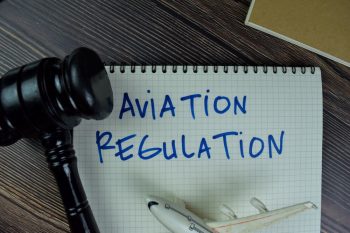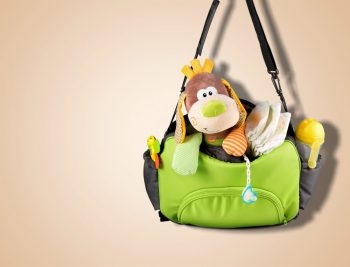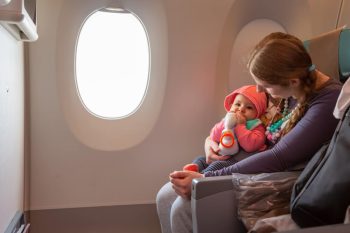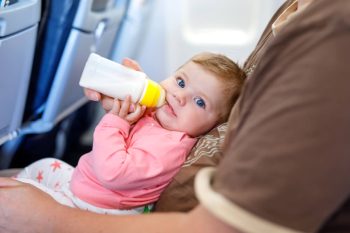Traveling with a baby can be overwhelming, especially for new parents who are unsure about when it is safe to fly with their little one: so, when can you fly with a baby?
Flying with an infant involves not only taking care of the baby but also ensuring that the flight is comfortable and safe for everyone else on the plane.
This blog post will explore the various factors to consider before taking your baby on a flight and provide answers to the most frequently asked questions about flying with a baby.
Age of the Baby
The recommended age for flying with a baby is generally two months old, but each airline has different rules regarding the minimum age for air travel.
Some airlines allow babies as young as two weeks old to travel while others require infants to be at least three months old.
It is important to check with your airline regarding their age restrictions before booking a flight.

Baby’s Health
Before flying with your little one, make sure they are healthy and fit to travel. It is essential to consult your pediatrician to ensure that your baby has been cleared for air travel.
If your baby has any respiratory or ear infections, it is better to postpone your trip until they have fully recovered. Flying can cause pressure changes that can be difficult for babies to handle, especially if they have an ear infection.
Also, consult with your doctor regarding vaccinations that your baby needs before traveling to a particular destination.

Length of the Flight
Consider the duration of the flight when flying with a baby. Short, direct flights are the best for babies as they can become easily uncomfortable and fussy during long flights with layovers.
Try to plan your trip around a time when your baby is well-rested, and carry along essentials like diapers, formula, baby food, and extra clothing in case of unexpected delays.

Carrying Options
When flying with a baby, parents should consider carrying options. Most airlines allow parents to carry their baby on their lap or in a bassinet that is provided by the airline.
Some airlines also offer infant seats that can be secured to the seat next to the parent’s seat.
Carrying options can also include baby carriers or slings that can be worn during the flight. Choose the carrying option that is comfortable and safe for both you and your baby.

Additional Tips
Flying with a baby can be challenging, but there are a few additional tips that can help make your trip less stressful.
Book your flight during off-peak hours to avoid overcrowded flights and long security lines. Always pack extra diapers, wipes, and other baby essentials in your carry-on bag in case of unexpected delays.
Try to minimize pressure changes during take-off and landing by nursing or giving your baby a bottle or pacifier to help with ear discomfort.

As a new parent, it is natural to be hesitant about flying with your little one. However, with the right planning and preparation, flying with a baby can be a hassle-free experience.
Consider factors like your baby’s age, health, and the length of the flight, and choose carrying options that are safe and comfortable for both you and your baby.
Most importantly, remember to relax and enjoy the experience!


